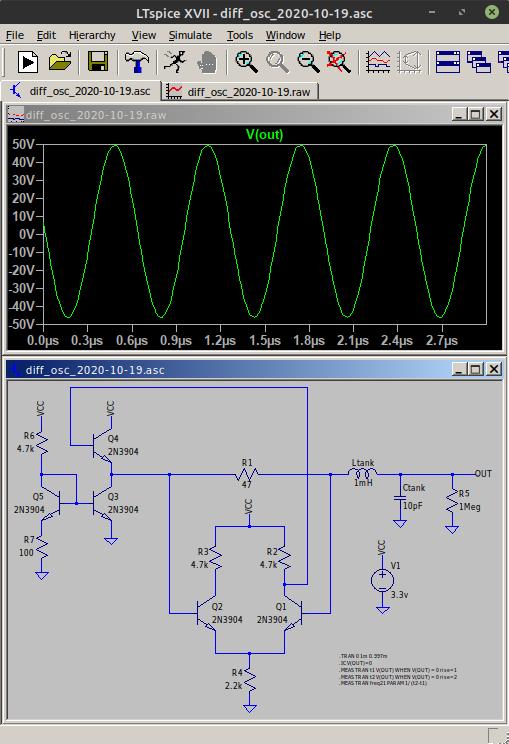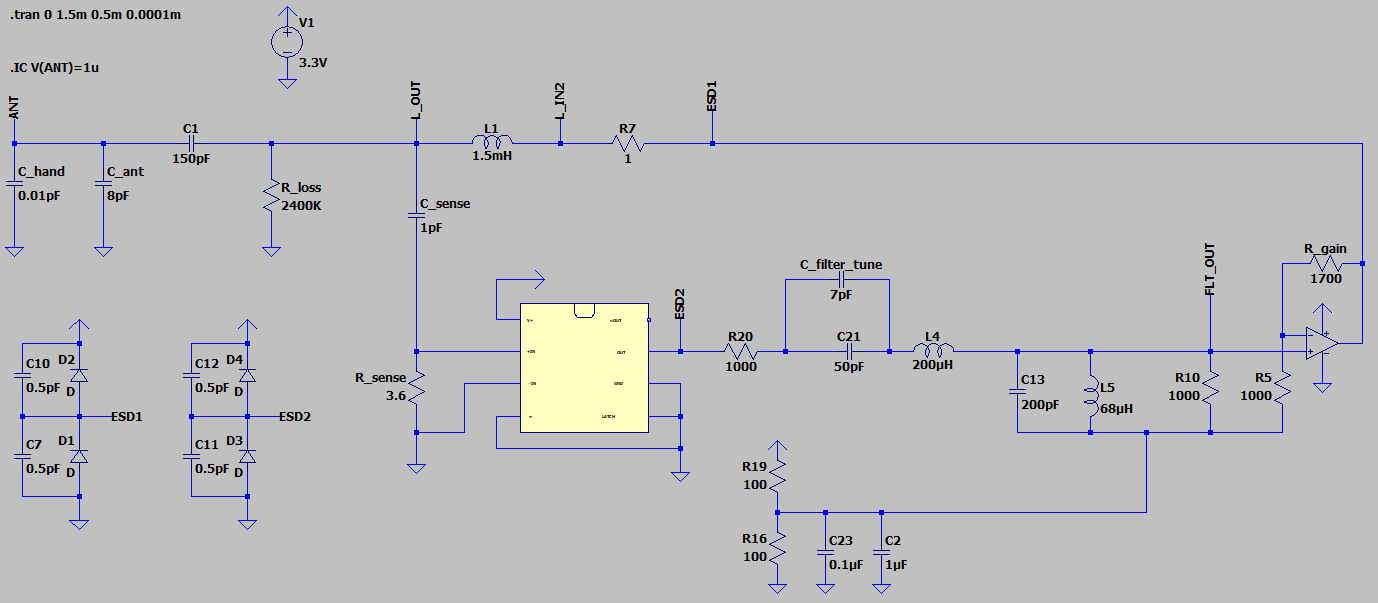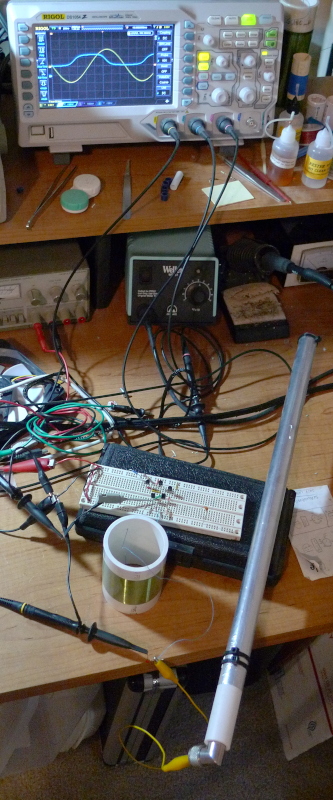"What I don't get is where the harmonics come from, between the mixer output and the speaker are we supposed to ensure harmonics are introduced?
Are we to introduce them prior to the mixing?" - innominata
Harmonics are introduced via non-linearities, which can be anywhere in the signal chain. Usually the mixer and/or after the mixer. I've only dabbled with mixing, perhaps ILYA or Dominik could answer this better.
"Basically I'm trying to understand why my .wav output sound like a pure sine tone and yours sounds like a theremin."
If you see a sine wave coming from your simulation then you will probably hear a sine wave (distortion invisible to the eye can be audible). But if your simulation is clearly producing a non-sine wave then you should be hearing harmonics.
Theremin simulations are hard to do right, as often the oscillators can take time to ramp up to their stable operating points. You should run the sim for a long time and examine where it seems to be constant. Also, it's really easy to mistake oscillation with LC "ringing" which just dies down, I've done this more times than I can count.





